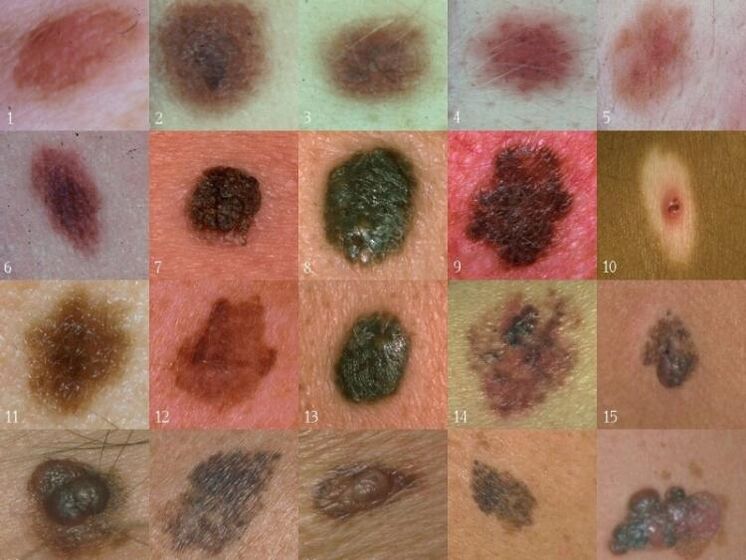
Some types of human papillomavirus, penetrating through damaged areas of the skin, cause cells to grow rapidly in its upper layer. As a result, warts are formed. The types of warts can vary. They form anywhere on the skin and can vary widely in size and color. Usually warts do not bring significant problems, they go away on their own. Nevertheless, in some cases it is worth seeing a doctor and removing them.
The types of warts on the body are usually distinguished according to the place of their distribution.
Types of warts
- Vulgar (common)
- Plantar,
- Dish (young),
- Genital warts (genital warts)
- Skinny,
- Senile (seborrheic keratomas).
Common warts
Vulgar or common - this is the most common type of these neoplasms. These are small nodules (up to 10mm) with a rough surface. They protrude very slightly from the surface of the skin and are completely painless. Common warts form on any part of the body, but most often they are found on the neck, on the head, on the folds of the elbows or knees.
Another characteristic of common warts is the appearance next to the "main", large wart, smaller.
Plantar
It is one of the varieties of common warts, it is also called "Spitz". It is located on the skin of the foot, most often on the side of the sole. It consists of several papillae, fused to each other, surrounded by a scroll. Sometimes the Spitz looks like a dense thorn that has grown on the skin. Sometimes plantar warts can develop inside the skin. Then they look like a pit surrounded by a scroll with protruding papillae. Plantar warts often cause inconvenience to a person because they cause discomfort and even pain when walking.
Their formation can be provoked by tight or uncomfortable shoes. In such shoes, areas of the skin are damaged and become more vulnerable to the penetration and development of the human papillomavirus.
Apartment
Flat warts are more common at an early age, in children and adolescents, and are therefore called young. These are small formations (usually around 3mm). They can be round or irregular. The surface of juvenile warts is smooth and flat. The color is usually the same as the skin, sometimes flat warts can have a yellowish tint. This type of warts can form on any part of the skin, but their "favorite" places are on the face and hands.
Flat warts usually don't cause physical discomfort and go away over time. However, when placed in prominent places, they cause cosmetic discomfort, so patients often turn to doctors and cosmetologists for removal.
Genital warts
These warts are localized in the genital area and infection occurs through sexual contact. The most common spread of genital warts is the groin, penis, lips, and anus. In addition, this type of warts can form in the mouth.
Genital warts are small growths on the skin with a sharp point, small papillae. These taste buds merge and often resemble cauliflower. The color of genital warts is dark, pink flesh color.
Treatment of genital warts is carried out by dermatovenerologists with the participation of a gynecologist or urologist.
skinny
Filiform warts (acrocords) are more common in older people. They are elongated growths that look like a thread. The size of filamentous warts can be up to 1 cm. The localization of the acrocord is the skin of the neck and face. Most often they are formed on the eyelids, lips. There are filamentous warts under the armpits.
Acrocords are often injured due to their elongated shape. By themselves, in most cases, they do not go away, moreover, after removal, often there are relapses with the formation of new warts in the same places.
Senile
Seborrheic keratomas most often develop in old age due to skin changes. They are located on the body anywhere, but most often on the neck, on the arms, on the chest. They are small, flat papules with clear boundaries. Senile warts are more often pinkish-yellow or brown in color, their size can reach 2 cm, they can be simple and form entire foci. Dead skin cells form the basis of these neoplasms. At first they are soft, but over time they become dense, covered with cracks.
Senile warts require special attention because they tend to turn malignant.
So, there are different types of warts. Most are harmless, but it's best to see a doctor right away and be sure.














































































